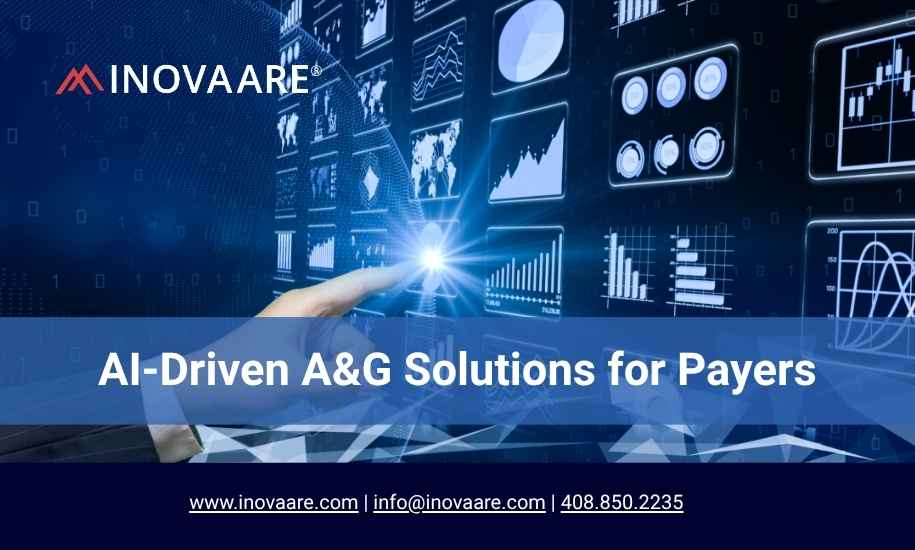Healthcare payers are under constant pressure to resolve appeals and grievances faster, meet CMS deadlines, and avoid audit findings. But most teams are still buried under manual tasks, pulling data from siloed systems, logging cases by hand, chasing documentation, and reacting to last-minute audit triggers.
This isn’t just exhausting. It’s risky. And AI is changing that.
Healthcare payers are turning to AI-driven A&G solutions to reduce manual effort, improve audit readiness, and gain better control over compliance workflows.
Let’s understand how.
What makes A&G so complex?
A&G is one of the most regulated functions in a health plan. CMS expects:
- Timely intake, classification, and resolution
- Accurate and complete documentation
- On-demand universe generation
- Clean data for audits
- Root-cause correction and closed-loop tracking
A recent OIG audit found that over 50% of sampled health plans failed to meet timeliness requirements for processing grievances and appeals, leading to potential harm to beneficiaries
Now layer in member volume, staffing gaps, delegated entities, changing rules, and siloed systems, and it’s easy to see why even strong and experienced A&G team’s struggle, resulting in missed SLAs, incomplete cases, repeat issues, and CMS audit findings.
The real problem: Too much manual work
Ask any compliance, operations, or IT leader, and they’ll tell you, A&G is still stuck in manual mode:
- Case data entered manually
- Evidence gathered from multiple departments via email or Excel
- Timelines tracked in siloed tools
- Universe files created under pressure, often with errors
- Limited visibility into repeat complaints or compliance risks
This manual drag not only slows teams down but also makes audit readiness unpredictable. According to a McKinsey study, healthcare workers spend up to 70% of their time on administrative tasks, much of which can be automated through AI agents
How AI-driven A&G solutions help payers simplify compliance and operations
Modern AI-driven A&G solutions for payers now embed AI into the daily flow of work, not as a separate tool, but as part of how teams intake, manage, review, and report cases.
Here’s how AI helps:
1. AI-powered intake and classification
AI-driven A&G solutions for payers read unstructured complaints, emails, call logs, documents, and auto-classifies them based on CMS categories. This reduces intake time and ensures accurate routing from day one.
2. Document summarization and trail creation
Instead of sifting through PDFs or notes, AI bots summarize evidence, flag gaps, and auto-tag relevant documentation. Teams spend less time digging and more time resolving. According to Deloitte, 83% of health execs say AI will transform compliance and documentation in the next 3 years.
3. Audit readiness with pre-scrubbed universes
AI-powered scrubbers clean and validate CMS universes in real time. Errors are flagged early, not days before submission. Health plans gain confidence in every file sent to regulators. One major payer using AI scrubbers saw a 70% reduction in CMS universe errors year over year.
4. Root-cause insights and repeat issue detection
By analyzing patterns across A&G cases, AI highlights systemic issues, repeat provider delays, recurring denial codes, unresolved grievances, so you can fix problems at the source. A study published in Health Affairs shows that unaddressed systemic complaints often lead to higher member attrition and Star Rating drops.
5. GenAI copilots for compliance and operations
Tools like Inovaare’s Usher Copilot let teams ask natural language queries like:
“Show me all grievances related to transportation delays in the last quarter.”
“Which CAPs are pending for delegated entities with more than 3 violations?”
No SQL. No spreadsheets. Just answers.
This improves cross-team collaboration and speeds up compliance reviews by over 40% on average.
AI agents are adding more muscle to AI infused workflows
While AI enhances A&G across the board, AI agents are designed to autonomously perform specific, high-value tasks, continuously and without manual handoffs.
Here’s where AI agents in A&G are making noticeable impact:
1. Seamless case intake
AI agents pull complaint data from email, IVR, call logs, portals, or paper scans and auto-fill case records, reducing intake time by up to 60% (Cognigy).
2. CMS category classification
They apply CMS-specific logic to classify each case correctly, minimizing rework and ensuring clean universes downstream.
3. Evidence tracking and tagging
Agents proactively track document status, tag attachments, and auto-flag missing pieces, creating an auditable trail.
4. Compliance queries and recommendations
Some agents work like copilots. Ask, “Which grievances are trending among members with dual eligibility?” and get an instant, context-rich answer. These agents work 24/7. They don’t forget deadlines. And they help your team focus on solving, not just sorting.
What this means for A&G teams
- 30–50% less manual effort on intake, evidence gathering, and reporting
- Faster resolution and improved SLA compliance
- Better audit performance with cleaner, CMS-ready data
- Fewer repeat issues through real-time insights
- Stronger collaboration across compliance, ops, and IT
Getting started with AI in your A&G department
You don’t need to overhaul your systems overnight. The best approach is phased:
- Start with AI-powered scrubbers to clean universes and reduce audit risk
- Add intelligent intake to speed up case capture
- Layer in copilots and insights for operational intelligence
- Embed across delegation oversight, provider relationship management, and GRC workflows for full visibility
Inovaare’s HIPAA compliant health cloud platform for payers makes this modular, so you move at your own pace, but with immediate impact.
AI in A&G isn’t about replacing people. It’s about freeing them from grunt work and giving them tools to act faster, smarter, and more confidently, whether it’s resolving a member complaint or submitting an audit file.
Let’s talk about what’s holding your A&G operations back.
Schedule a free walkthrough to see how AI-powered automation can reduce risk, improve turnaround times, and make your next audit less stressful.
